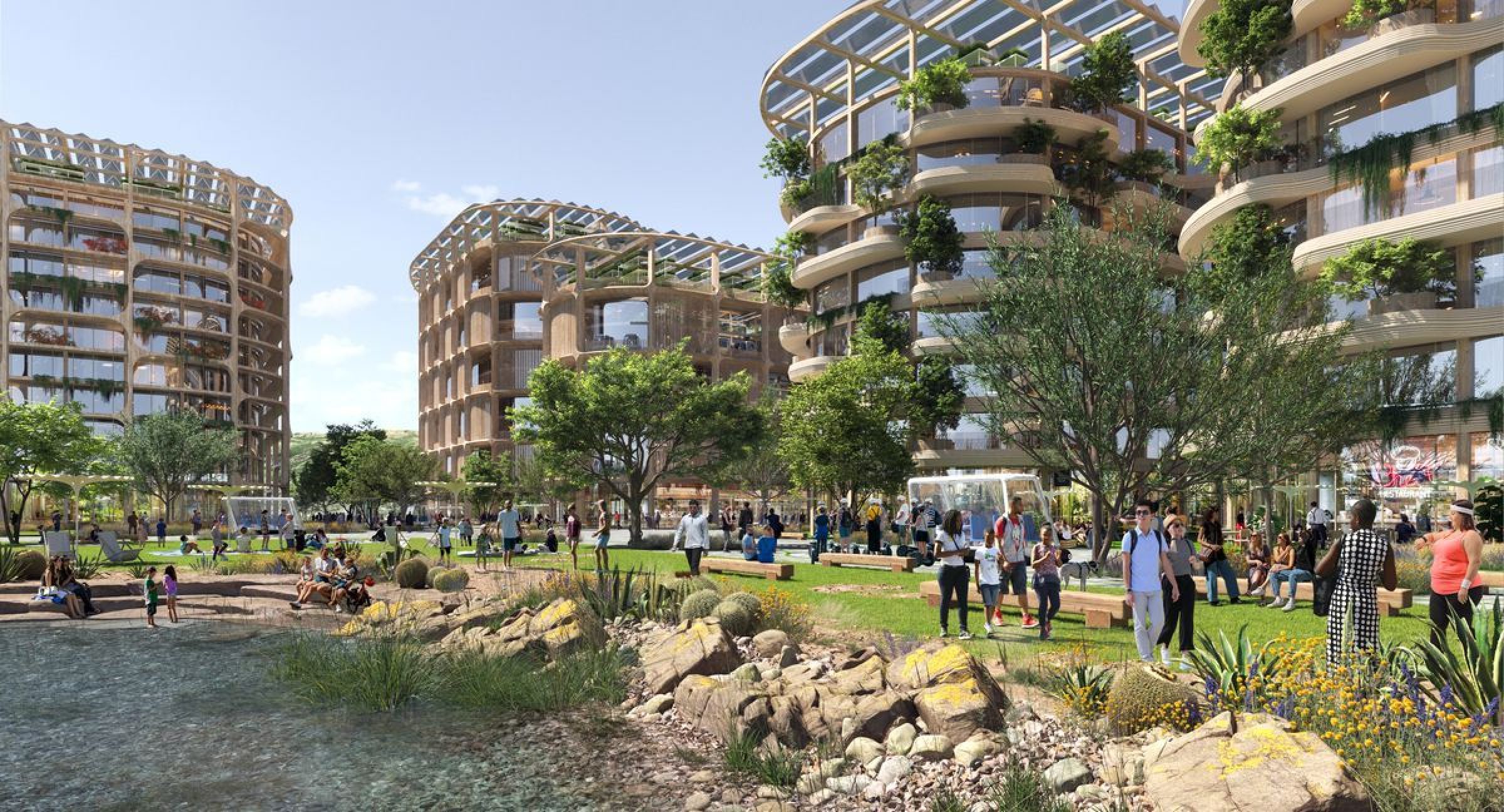During a town hall in New York City, the Diapers.com founder and his team envisioned Telosa having dozens of “15-minute cities” and a resident-controlled endowment to help pay for government services.
The beginnings of a new, sustainable city in the American desert could emerge within just eight years, according to billionaire Marc Lore, founder of Diapers.com and Jet.com, and others working on the Telosa project.
Since Lore announced the project in 2021, details for the city of Telosa have been scant. But on Monday, the developers of the proposed city of 5 million people held their first town hall.
During the panel discussion, Lore narrowed down the probable location of Telosa, saying the team is looking at parcels of land in Nevada, Utah and Arizona. The goal is to have 50,000 people living there by 2030, he said.
Lore said the Telosa team must assess how best to finance social services.
“Despite capitalism and all its strengths, and the great material progress we’ve made, it’s not perfect,” he said. “So we thought about: Is there another way?”
Scandinavian countries such as Denmark fund their extensive social services through taxes, Lore said. The full tax rate for an individual in Denmark is 52%, though the effective tax rate is lower in most cases due to deductions.
For Telosa, Lore said he wants to buy land that’s “virtually worthless” and give it to a foundation managed by city residents so they’ll have a stake in the land. When the city eventually grows to its full population of 5 million, the land will become more valuable, he said. The foundation can then sell off the land, invest the proceeds into an endowment, and use the income from the investments to pay for at least some social services.
“If it worked well and people trust it, maybe people will want to contribute to it even more and donate to the endowment,” Lore said. “In the way that university endowments grow and could do more for the university, this would be the same thing. We’d be able to do more for the city for the following generations.”
Building a new city allows for more technology integration compared with an existing city, Lore said. For example, Lore said, autonomous vehicles operating on city streets would make the streets safer for pedestrians and reduce costs because streetlights and street signs wouldn’t be necessary. The roads could also be narrower, providing more room for walking and biking.
“There’s advantages that technology affords us today that it’s just too hard to implement in an existing city,” he said. “The real hard part about autonomous vehicles is combining [human-driven] cars with autonomous vehicles. If you were to build a city that’s fully autonomous, it’s actually very easy. We can do it with not a lot of effort or investment.”
The panel discussion took place at the Brooklyn Museum in New York City. Though a live audience was in attendance, the panelists did not take audience questions.
Alana Goldweit, Telosa’s lead architectural project designer, shared more details about what the city could look like. Goals include eliminating all fuel-based cars and reducing water use, she said.
Telosa will have 36 districts, each of which is envisioned as a “15-minute city”: It will take residents of each district no more than a 15-minute walk or a shorter bike ride to reach their daily needs, including offices and living spaces.
“At night, when the offices are shut down, the residences are alive, and vice versa,” said Goldweit, an associate with architectural firm Bjarke Ingels Group. “This way, people can really move about the city and feel like there’s always life and there’s always this level of safety.”
Instead of having one large central park, a park will be woven through the city so more people have frontage on green space, she said. The downtown will be spread along the central spine of the park.
Transportation is another consideration. The team is developing an autonomous car that can transform into an autonomous helicopter, Goldweit said. The city itself will have no curbs or parking spots. Cars looking to park will pull into an automated pod and park underground.
“It’s really starting to declutter the city and use design to create really refreshing and inviting spaces,” she said.
Telosa also needs to have better policing than other cities, said Preet Bharara, lawyer and former U.S. attorney for the Southern District of New York. He cited examples of cities such as Camden, New Jersey, which disbanded its police force in 2013 and rebuilt it. Crime rates in the city subsequently fell, although some experts say aggressive police tactics and surveillance have continued.
Whether it’s successful or not, building a new city is a chance to explore how to better run it, he said.
“You don’t have to have a police department that has been marred by scandal and excessive use of force,” Bharara said. “You don’t have to have a local prison system like Rikers Island.”






